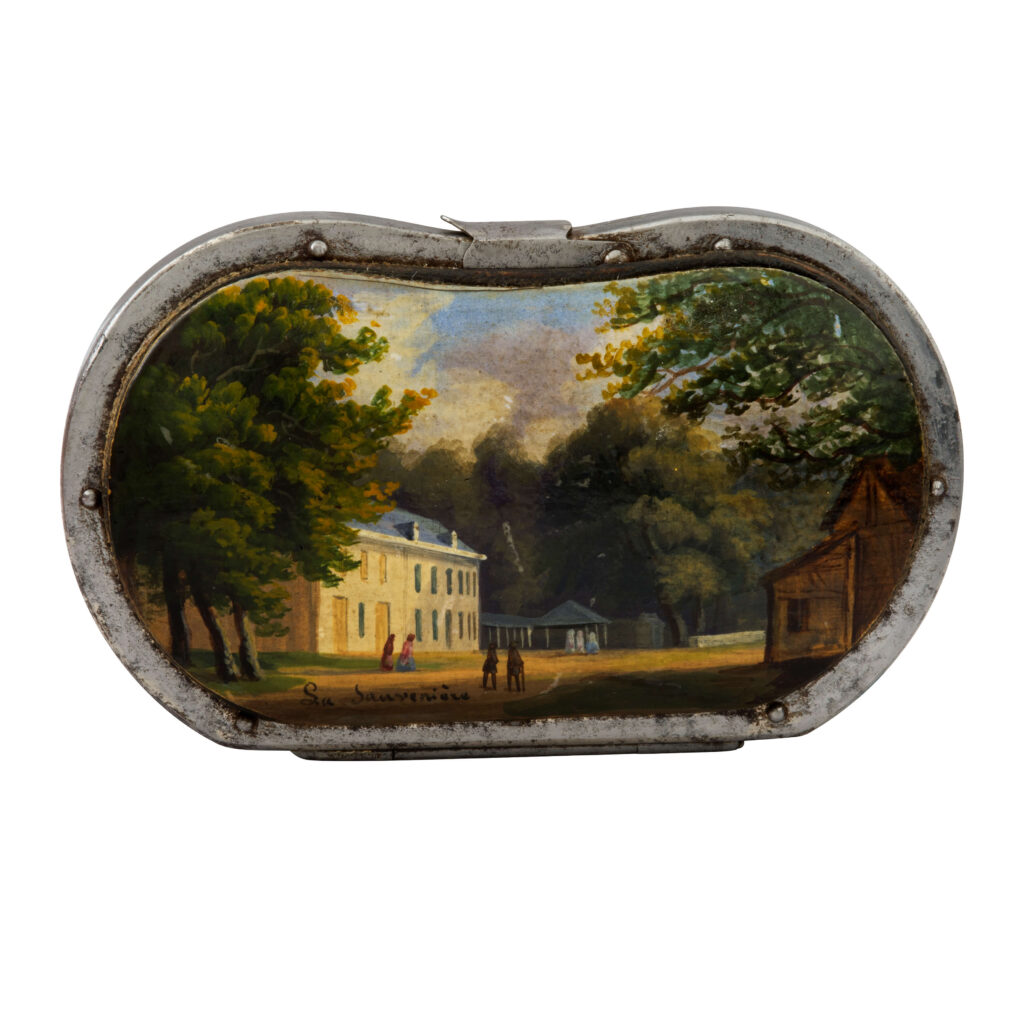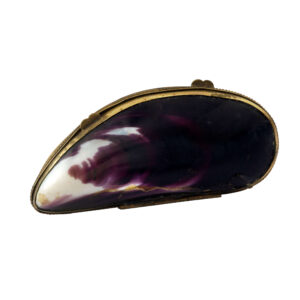
The new exhibition at 11 Conti, the Monnaie de Paris Museum, is dedicated to an item essential to the circulation of money – the coin purse. This exhibition running until 3 November 2019 will be a pleasant addition to your money museum visit. Two rooms of the museum are dedicated to it, and admission is included in the museum admission price.
The invention and use of the coin purse, a numismatic-related item, are intrinsically linked to the creation and use of coins as a means of payment.
The exhibition retraces the history of the purse which, literally, has been carrying coins from antiquity to the present day. The exhibition itinerary presents more than 300 pieces divided into 6 chapters. The majority of the objects on display come from Claudette Joannis’ personal collection, which she and her husband Henri Joannis Deberne built up together. The curators of the exhibition completed the presentation by borrowing wallets from major leather goods and jewelry companies such as Hermès, Van Cleef & Arpels, Boucheron, Le Tanneur and Camille Fournet. The collections of about ten Parisian and provincial museums were also solicited including Carnavalet, Petit-Palais, Malmaison, the Le Secq des Tournelles Museum in Rouen, the Musée de la Nacre (Mother-of-Pearl Museum) in Méru, etc.

Just like the coin of which it is a by-product, the purse has a lot to say – the materials used (tortoiseshell, wood, ivory, mother-of-pearl, fabric, metal, shell, leather, etc.), aesthetics, the history of fashion, the evolution of social conventions, etc. This original exhibition takes visitors on a journey through the eras, styles and uses of this little-known item.
These are the 6 main themes:

The Purse’s Predecessor
Pouches, bags, and pocketbooks are the predecessors of our coin purse. Whether it’s a simple pocket made of fabric or one with beautiful embroidery, they had several functions. In addition to these precious remnants from the Middle Ages and the Renaissance, there are also rare token pouches made of silk, which bear witness to profitable practices that are specifically French.

The Purse’s Reign During the Restoration and the Second Empire
This part of the exhibition is also its core. It is owed to the perseverance of the collector Henri Joannis Deberne who, throughout his life, collected several beautiful examples of purses, testimony to the Golden Age of the purse (1830-1890). Mostly feminine, these objects bear witness to the evolution of its use. The purse was henceforth part of one’s ensemble, just like the fan or the dance card.

The Purse’s Secrets
Still based on the collection and research carried out by Claudette Joannis and Henri Joannis Deberne, the purpose of this part of the exhibition is to show the richness of the shapes of these objects which are rectangular, round or oval. The purses of this period are also surprising due to their different materials such as metal, ivory, mother-of-pearl, porcelain and synthetic materials. The purse then became a sign of social status.

Eccentricity
The items presented in this section combine currency, make-up kits, sewing kits and even card holders. And what about purses that aren’t purses but have the same shape such as powder compacts, cigar holders, etc. So many items that bear witness to a trend where accessories are anything but an accessory!

From Purses to Handbags
At the turn of the 19th and 20th centuries, the handbag tended to assert itself as the ever-elegant container of everything that modern women needed. The major brands innovated with materials and shapes that followed the decorative trend of the moment, in particular Art-Deco.
The Purse Today
From new materials and shapes to a return to more traditional styles, the purse in its current use is still alive and well! With as many predecessors as successors, it is a miniature piece of evidence of a social history that is being reinvented every day.
In connection with the exhibition
Le Tanneur and Monnaie de Paris invite visitors to discover the secrets of the master leather craftsmen’s profession by making their own “Sans Couture” purse. An iconic object and a true innovation for its time, the “Sans Couture” or seamless purse, invented by Le Tanneur’s leather craftsmen in 1898, won an award at the Universal Exhibition in 1900.
A guided tour of the exhibit takes you to the heart of the history of leather goods before starting to create your own purse, based on the model designed during the Belle Epoque. Techniques for bending, cutting, riveting, assembly, etc. Here’s your chance to learn the art of leather goods!
For more information on the exhibition go to the website of the Monnaie de Paris Museum.



